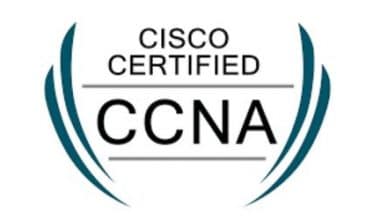Your marketing team most likely conducted a customer segment to create buyer personas while preparing to market your product. You used this information to reach out to specific customers in ways that were tailored to their needs. Your flagship product is currently selling well, but you believe that with a few tweaks, it could appeal to a product of different customer segments. This is where the product segment enters the picture. So, take a look at the product segment marketing example provided below.
What is a Product Segment?
When you offer different versions of your product to different groups of people, you are creating a product segment. Assume you are a SaaS company that has created project management software. Some software developers who use your product may require bug-tracking features. A group of manufacturing professionals may require tools to assist them in organizing parts lists. Your company may have a base product that provides core functionality, as well as several versions built around that core that caters to specific industries.
What is the Significance of a Product Segment?
You might be wondering if the product segment is worthwhile. Depending on your industry, creating these variations on your product could be time-consuming. It helps to think of it as an easy expansion of your product range rather than a time-consuming expansion of one product. That shift in perspective may have sold you on the idea, but if not, consider some of the advantages of a good product segment strategy.
#1. Cater to various customer groups
Without a product segment, you will either offer customers less or more than they require. While more features aren’t always a bad thing, you don’t want customers to feel like they’re paying too much for something they don’t need. You are inviting them to look for a business that caters more specifically to them by not providing all the features they may require. Product segment, especially when based on your core buyer personas, enables you to bridge the gap between those two extremes, acquire more customers, and improve customer retention.
#2. Segment willingness to pay data
You can segment your willingness to pay data by customer segment, but that data will be less than useful as long as everyone can buy the same product. By creating multiple products that serve different segments, you can use that willingness to pay data by segmenting it according to your product segments and pricing them accordingly.
#3. Examine the performance of individual products.
Monitoring your product’s performance allows you to best prevent churn and plan for new features. When products are more closely aligned with a specific customer segment, you can monitor the performance of each product individually. This will allow you to gain a better understanding of how each customer segment responds to your product by monitoring the product that is most closely aligned with them rather than one nebulous product.
#4. Identify new growth opportunities.
We’ve already discussed how you should think of the product segment as an extension of your product line. The benefit of segmenting your product in this manner is that it makes it simple to identify growth activities. As you examine the types of customers who use your product and the feedback you receive from your target audience, a picture of how you can further segment your base product to appeal to a broader range of people and unlock new growth levers will begin to emerge.
#5. Understand the target market before deciding on a price.
By abandoning the one-size-fits-all approach of a single product offering, you can also abandon one-size-fits-all pricing. As a generic singular item, your product appeals to a wide range of customers. As a segmented product tailored to those customer bases, you can also implement a pricing strategy that is appropriate for each of those target markets.
What Does Product Segment Strategy Entail?
Once you’ve decided that segmenting your products is a good idea, you should get started. But how do you go about doing that? What are the steps in product segmentation, and what strategy should you use? After all, if you take the wrong approach, you may end up wasting a lot of time and money for a small return. The following are four key elements of a good product segment strategy.
#1. Product usage analysis and why people buy your product
Your existing customer base can already tell you a lot about how to segment your product, at least initially. Examine how your current customers use the product. Examine which industries they are in, as well as which features each customer segment uses the most, and consider how those features can be expanded to better reach the industries in question.
#2. Strategies for customer and market segmentation
The first step is heavily reliant on a solid customer and market segmentation strategy. ProfitWell Segmentation, for example, can easily and accurately segment your customers based on industry, location, gender, and 147 other characteristics. ProfitWell Segmentation is a free product that provides you with all the tools you need to segment your target customers, market, and products effectively. Consider the following factors when developing a product segment:
1. Demographic segmentation
Most people think of segmentation in terms of these basic demographic categories. It includes information such as your customers’ age, income, marital status, and gender. This data will help determine which customer segments a given product will appeal to.
2. Psychographic segmentation
This type of segmentation divides your users according to their interests and activities. This one is especially useful for determining how to cater to those aspects of your customers’ personalities and bring a new product segment to market that is specifically targeted at them.
3. Behavioral segmentation
Behavior segmentation is all about examining how customers interact with your product and your company. When combined with psychographic segmentation, you can learn which features and aspects of your product are most important to customers who have a specific set of interests.
4. Geographic segmentation
It may not appear that segmenting your customers based on their geographic location can tell you much about how to tailor a product to them, but different cultures frequently have very different approaches to a given problem. Examining how customers from various regions interact with your product can reveal a lot about how you might cater to those people.
#3. Price segment strategy
After you’ve used your data to flesh out some product segment ideas, you must decide how to price those products. While it may be tempting to set a single price for all similar products, you will most likely be losing money. A thorough analysis of willingness to pay and market realities, such as that provided by ProfitWell’s Price Intelligently, will provide you with a clearer picture of how to price each product segment optimally for maximum growth potential.
#4. Product positioning & effective marketing strategy
It’s time to put your marketing department to work now that your product segments have been created, priced, and are ready to launch. You’ll already have information about the buyer personas that your product segments are aiming to attract, which is a great place to start. Again, the additional work of marketing separate products may appear to be a burden, but if everything is done correctly, the result will be more sales and less churn.
Product Segment Example
Let’s look at some real-world examples of two of the world’s largest corporations and their use of a product segment. This section should help you understand how and why the product segment works in the following example.
#1. Coca-Cola
You’ve probably seen the least obvious way Coca-Cola segments its product if you’ve been to certain smaller convenience stores. The Mexican version of Coke is available in a few smaller stores in the United States. It’s popular in some parts of the United States because it’s made with real sugar rather than high fructose corn syrup, which is preferred by a large portion of the Mexican market. Pepsi, a Coca-Cola competitor, sells a real sugar variant of their cola in the United States alongside the high fructose corn syrup version.
Both beverage companies also provide a variety of minor variations on their original colas. There are diet versions, caffeine-free versions, and flavor-added versions available. Let’s take a look at another product segment example for better comprehension.
#2. General Motors
Automobile manufacturers are another excellent example of a product segment. Almost every model from every manufacturer is available in a dizzying array of trim packages, each with its own set of options from which customers can choose. Furthermore, different brand names under the same banner provide even more segmentation. While general consumers may prefer a Chevrolet pickup, luxury users may prefer a Cadillac pickup. GMC is the go-to vehicle for commercial and heavy-duty applications.
Market Segment vs. Product Segment
While the terms product segment and market segment are often used interchangeably, they are not the same thing. Product segmentation is when a company changes its product to appeal to different markets. Market segmentation occurs when the same company modifies its marketing strategy to appeal to different markets.
A small legal business office with bilingual lawyers, for example, may offer some legal advertisements in English and others in Spanish, with those advertisements likely to run on different stations and at different times.
While product segmentation assists businesses in tailoring their products to specific markets, market segmentation assists them in tailoring their message to specific markets. Market segmentation removes communication, access, and language barriers, allowing businesses to reach as many people as possible with their offerings. It enables businesses to build relationships with a diverse client base while also increasing their bottom line.
How to Carry Out Product segment
If you’ve decided that product segment is a good idea for your company and products, it’s time to start the process. Using data to guide your decisions is the best way to ensure success. For a successful product segment strategy, follow our four-step process:
#1. Examine product usage
Begin with your existing customer base. Who are your current clients, and how do they use your product? Learn about their industry, the features they use the most, and the features they wish they had. Before beginning segmentation, it is beneficial to understand how your current customers interact with your product.
Use the information from your current customers to inform your decision to expand your product segments to other target markets. Consider adding or expanding features to reach the new customer segments you’ll be targeting.
#2. Customer and market segmentation strategy
You should have a complete customer and market segmentation strategy in place before proceeding with this step. Your product segmentation strategy will be informed by the data gathered from your market research. If you need to conduct additional research, SurveyMonkey has a market research survey template that you can use to get started. It’s completely customizable so you can gather the exact information you need.
#3. Price segmentation strategy
You’ve created new product segments based on market research data. You must now consider the best pricing for each segment. Yes, it would be simple to charge the same price for all of your similar products, but you could — and should — charge more for some of the new product variations.
#4. Product branding
You’ve segmented, created, priced, and are ready to launch your products. It is now time to plan your marketing strategies. You’ve already gathered your data and created buyer personas for each segment, so you can market each product segment separately. It may appear to be a lot of work at first, but the result will be increased sales and lower churn, so it will be worthwhile.
What are the 4 Types of Product Segmentation?
The four main types of market segmentation are demographic, psychographic, behavioral, and geographic segmentation, but there are many other strategies you can use, including numerous variations on the four main types.
What is Product Segment with Example?
Product segmentation is becoming increasingly common in large corporations. For example, General Motors divides its products into different brands aimed at different socioeconomic groups: Chevrolet, Buick, Hummer, and Cadillac.
What is a Segment?
The process of dividing a company’s target market into groups of potential customers with similar needs and behaviors is known as segmentation. This allows the company to sell to each customer group using different strategies tailored to their specific needs.
How Do You Identify Market Segments?
Market segmentation consists of several steps that must be completed:
- Find your customers based on what they require and desire.
- Examine their usage habits, preferences, lifestyle, and demographics. Take note of your market’s growth potential as well as your competition’s potential risk to your company.
How Do You Segment a Product Example?
To segment a market, use the five steps outlined below:
- Define the market in which you are interested.
- Using a segmentation technique, create a market segment.
- Develop segment profiles.
- Examine the profile of each segment.
- Choose your target market.
How Do You Target a Segment?
Demographics. Demographics are a popular method for segmenting target markets. This is when you use several personal characteristics to identify a customer prototype in a specific market. Among the characteristics used to segment demographically are age, race, gender, marital status, income, education, and occupation.
What Makes a Good Segmentation?
A good market segment should be the following: identifiable (or differentiable). A segment should be able to be described using descriptive characteristics (geographical, demographic, and psychographic) or behavioral considerations (consumer responses to benefits, usage patterns, or brands).
Conclusion
A product segment is an efficient way to broaden your product portfolio to meet the needs of more customer segments. Using hard facts and data to analyze product usage; perfecting your customer and market segmentation strategies; determining your price segmentation strategy, and developing your marketing strategy for each segment are the keys to a successful product segment.
I believe the aforementioned example of product segment made my point.
Product Segment FAQs
What are the 6 types of market segmentation?
This covers the six types of market segmentation: demographic, geographic, psychographic, behavioral, needs-based, and transactional.
What are the 4 types of marketing?
The “marketing mix” refers to the four Ps of marketing: product, price, place, and promotion. These are the key elements involved in the planning and marketing of a product or service, and they interact heavily.
What is product user segmentation?
The process of dividing users into distinct groups, or segments, based on shared characteristics is known as user segmentation. A company may segment users based on language preferences, product version, geographical region, or user persona.
What is a customer segment example?
Age, gender, income, education, and marital status are all examples of demographic segmentation.
- Types of Market Segmentation (+ Benefits, Tips & Examples)
- Behavioral Segmentation: Strategies, Examples & Helpful Tips
- Market Segmentation: All You Need To Know With Examples
- Market Segments: Definition & List Of Different Market Segments
- Psychographic Segmentation: Advantages, tools (+ practical examples)






